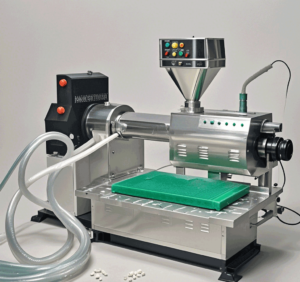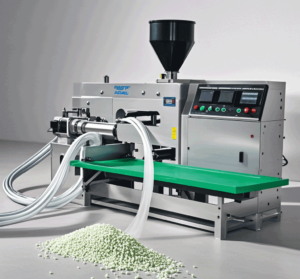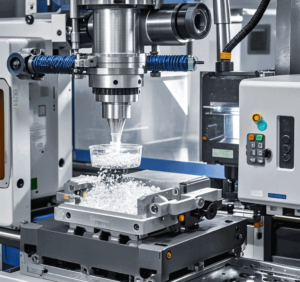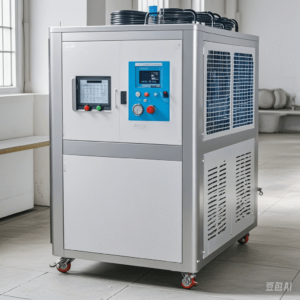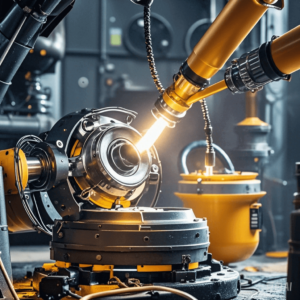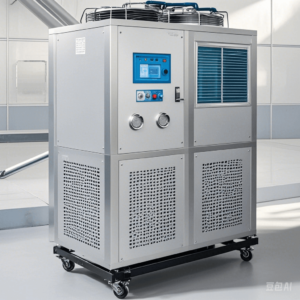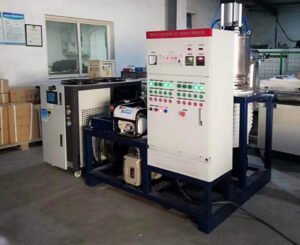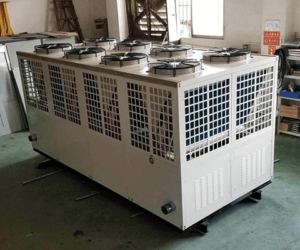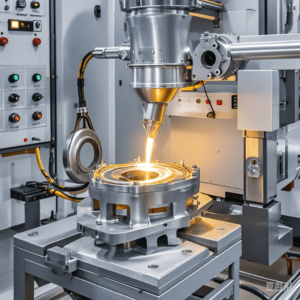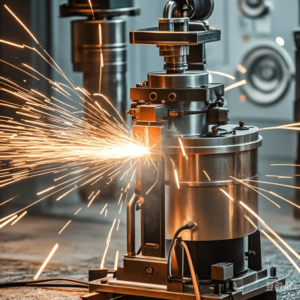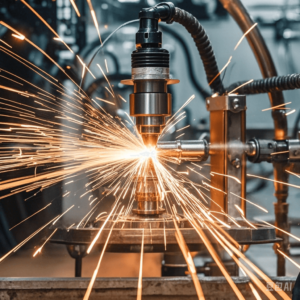Bạn có mệt mỏi với nhiệt độ ngột ngạt làm hỏng trải nghiệm bể bơi của bạn không? Không tìm đâu xa – the ultimate guide to choosing the perfect water chiller for your swimming pool is here! Whether you are a homeowner or a pool maintenance professional, finding the right water chiller is essential for maintaining that refreshing swim all year round. In this comprehensive guide, we will walk you through the key factors to consider when selecting a water chiller that suits your needs. From the size and capacity to energy efficiency and installation requirements, we leave no stone unturned. We understand that finding the perfect water chiller can be overwhelming, but fear not! With our expert advice and industry insights, you’ll have all the tools you need to make an informed decision. Get ready to dive into a world of unparalleled chilling efficiency and transform your pool into a cool oasis. Say goodbye to overheated water and say hello to endless hours of swimming enjoyment. Let’s get started!
Importance of a water chiller for swimming pools
A water chiller is not just a luxury for pool owners; it has become a necessity in regions where the temperature soars during the summer months. The primary function of a water chiller is to lower the temperature of the pool water, making it more comfortable for swimming. When the water temperature rises above a certain level, it can become uninviting and even unsafe for swimmers. High temperatures can lead to the growth of bacteria and algae, creating a health hazard and necessitating more frequent cleaning and chemical treatments. By investing in a water chiller, you ensure a safe and enjoyable swimming environment for family and friends throughout the warm months.
Moreover, the comfort of swimming in cooler water cannot be overstated. Imagine stepping into a pool that feels like a refreshing oasis rather than a warm bath. A water chiller allows you to maintain your pool at a comfortable temperature, enhancing the overall swimming experience. This is especially important for families with children or individuals who enjoy swimming for exercise. A consistent water temperature can encourage more frequent use of the pool, providing health benefits and a fun recreational space.
Furthermore, a well-maintained pool with cooler water can also increase the longevity of your pool materials and equipment. High water temperatures can lead to increased evaporation rates, which can cause chemical imbalances and damage to pool surfaces and fixtures. By regulating the water temperature, chillers help preserve the integrity of your pool, ultimately saving you money on repairs and maintenance in the long run. As such, a water chiller is an investment that pays off in comfort, safety, and the longevity of your pool.
Different types of water chillers
When it comes to water chillers, there are several types available, each designed to cater to different pool sizes and usage patterns. The most common types include air-cooled chillers, water-cooled chillers, and heat pump chillers. Air-cooled chillers are the most prevalent option for residential pools. They work by drawing in air, cooling the water through a refrigerant cycle, and then expelling warm air back into the environment. These chillers are relatively easy to install and maintain, making them a popular choice for homeowners.
Water-cooled chillers, on the other hand, use water from an external source, such as a well or river, to cool the pool water. While they are generally more efficient than air-cooled models, they require more complex installation and may not be practical for every homeowner. These chillers are often used in commercial settings or larger residential pools where efficiency is paramount, and the initial investment can be justified by lower operating costs.
Heat pump chillers are another option, functioning similarly to air conditioners by extracting heat from the pool water and releasing it outside. They are highly energy-efficient and can be used for both heating and cooling purposes. However, they perform best in moderate climates, as their efficiency diminishes in extremely hot or cold weather. Understanding the differences between these types of chillers is essential for making an informed decision that aligns with your specific pool needs and local climate conditions.
Factors to consider when choosing a water chiller for your swimming pool
Choosing the right water chiller for your swimming pool involves careful consideration of several key factors. One of the most crucial aspects is the size of your pool. The cooling capacity of a chiller is measured in BTUs (British Thermal Units), and it is essential to select a model that can effectively cool the volume of water in your pool. A chiller that is too small will struggle to maintain the desired temperature, while one that is excessively large will lead to higher energy costs and inefficient operation.
Another factor to consider is the climate of your area. If you live in a region with extreme temperatures, you may need a more robust system that can handle the heat. Additionally, consider how often you use your pool and during which seasons. For instance, if you plan to swim frequently in the summer, investing in a high-capacity chiller might be worthwhile. On the other hand, if your swimming seasons are limited, a smaller unit may suffice.
Installation requirements also play a significant role in your decision-making process. Some chillers require specific electrical setups or additional plumbing, which may increase installation costs. It’s essential to consult with a professional to assess your current pool setup and determine what modifications, if any, are necessary for a new chiller installation. By taking into account these factors—pool size, climate, usage, and installation requirements—you can narrow down your options and find the perfect water chiller for your needs.
Sizing your water chiller correctly
Proper sizing of your water chiller is vital for optimal performance and energy efficiency. The first step in sizing is to calculate the volume of your swimming pool in gallons. To do this, you can use the formula: length × width × average depth × 7.5. This calculation will give you the total gallon capacity of your pool, which is essential for determining the appropriate BTU rating for your chiller. Generally, a good rule of thumb is to have a chiller that can remove 1 BTU per gallon of water per hour for every degree Fahrenheit you want to lower the temperature.
For example, if your pool holds 20,000 gallons of water and you want to cool it from 85°F to 78°F, you need to remove 7 degrees of heat. Therefore, you would require a chiller with a cooling capacity of approximately 140,000 BTUs (20,000 gallons × 7 degrees). However, it is also important to consider factors such as the pool’s exposure to sunlight, wind, and usage patterns, as these can affect heat gain and cooling needs.
Additionally, it’s advisable to consult with professionals who can help you analyze your specific situation and ensure that you select a chiller with the correct capacity. Oversizing a chiller can lead to short cycling, which reduces efficiency and increases wear and tear on the unit. Conversely, an undersized chiller will struggle to maintain desired temperatures and could lead to higher energy consumption. Thus, accurate sizing of your water chiller is crucial for achieving a balance between performance and energy efficiency.
Energy efficiency and cost considerations
Energy efficiency is a significant factor when selecting a water chiller for your swimming pool. Operating a chiller can consume substantial electricity, especially during peak summer months when demand is highest. Therefore, it is essential to consider the Energy Efficiency Ratio (EER) of the chiller, which measures the cooling capacity relative to energy consumption. A higher EER indicates a more energy-efficient unit, which can lead to lower electricity bills over time.
Moreover, the initial purchase price of the chiller is just one part of the overall cost equation. It is crucial to consider the long-term operational costs associated with running the chiller. Units that may have a lower upfront cost could end up being more expensive in the long run if they are less efficient. Therefore, it is wise to invest in a quality unit that may have a higher initial cost but offers better energy efficiency and reliability.
In addition to the chiller itself, don’t forget to account for installation costs, maintenance expenses, and any necessary modifications to your pool infrastructure. These additional costs can vary significantly depending on the complexity of the installation and the type of chiller chosen. By carefully evaluating both the upfront and ongoing costs, you can make a more informed decision that aligns with your budget while ensuring that your pool remains a refreshing retreat all summer long.
Popular water chiller brands in the market
When it comes to selecting a water chiller, the brand can play a significant role in the quality and reliability of the unit. Some of the most reputable brands in the market include AquaCal, Arctic Heat Pumps, and Hayward. AquaCal is known for its wide range of efficient heat pumps and chillers that cater to both residential and commercial applications. Their units are often praised for their durability and innovative technology, making them a popular choice among homeowners.
Arctic Heat Pumps offers a selection of both heating and cooling solutions, focusing on energy efficiency and environmentally-friendly refrigerants. Their models often come with advanced features such as digital controls and smart technology integration, allowing users to optimize their pool’s temperature with ease. The brand has built a solid reputation for reliability and excellent customer service, which is crucial when making such an investment.
Hayward is another well-known brand that provides a variety of pool equipment, including water chillers. They offer efficient models that are designed for easy integration with existing pool systems. Hayward’s chillers are recognized for their advanced technology and user-friendly interfaces, making them a favorite among pool professionals. When considering a chiller, it’s wise to research these brands and read reviews to find the best fit for your specific needs and budget.
Maintaining and servicing your water chiller
Regular maintenance is essential for keeping your water chiller running efficiently and prolonging its lifespan. One of the most critical maintenance tasks is cleaning the chiller’s condenser coils, which can accumulate dirt and debris over time. A dirty coil can significantly reduce the unit’s efficiency and cooling capacity, leading to higher energy costs. It is advisable to inspect and clean the coils at least once a season, or more frequently if you live in a dusty area or have nearby vegetation.
In addition to cleaning the coils, you should also check the water filter regularly and replace it as necessary. A clogged filter can impede water flow and reduce the efficiency of the chiller. Many models come with a removable filter that can be easily cleaned or replaced, making this an easy task for pool owners. Furthermore, it’s essential to monitor the refrigerant levels in the system, as low levels can indicate a leak or other issues that may require professional attention.
Scheduling annual professional servicing is also a wise decision. A qualified technician can perform a comprehensive inspection, identify potential problems, and ensure that your chiller operates at peak performance. Regular servicing not only helps prevent major breakdowns but also keeps your warranty valid, which can save you money in case of repairs. By staying proactive with maintenance and servicing, you can enjoy a reliable and efficient water chiller for many years to come.
Cost of installation and operation
The cost of installing a water chiller can vary widely based on several factors, including the type of chiller selected, the size of your pool, and any necessary modifications to your existing pool setup. On average, homeowners can expect to pay anywhere from $2,000 to $5,000 for the purchase and installation of a residential water chiller. Air-cooled chillers tend to be more affordable than water-cooled units, which often require more extensive plumbing and electrical work.
In addition to installation costs, it’s important to consider the operational costs associated with running a water chiller. These costs primarily include electricity consumption, which can fluctuate based on local energy rates and the efficiency of the chiller. As mentioned earlier, choosing a model with a high EER can significantly reduce energy costs over time. On average, homeowners can expect to spend between $300 and $1,000 annually on electricity for their chiller, depending on usage and local rates.
Additionally, don’t overlook maintenance costs. While regular maintenance can prevent costly repairs, it’s still important to budget for routine servicing, cleaning supplies, and any parts that may need replacement over time. By considering all these factors—installation, operational, and maintenance costs—you can develop a comprehensive budget that encompasses the full lifecycle of your water chiller, ensuring that you are prepared for both the initial investment and ongoing expenses.
Tips for extending the lifespan of your water chiller
Extending the lifespan of your water chiller requires a combination of regular maintenance and smart usage practices. One of the simplest yet most effective ways to prolong the life of your chiller is to keep the area around the unit clear of debris. Ensure that there is sufficient airflow around the chiller, as restricted airflow can lead to overheating and reduce efficiency. Trim back any foliage or obstacles that may impede air circulation, especially during warmer months when the unit is working the hardest.
Another tip is to monitor the water chemistry in your pool regularly. Maintaining balanced water chemistry is vital not only for swimmer safety but also for the overall health of your pool equipment. High levels of chlorine or unbalanced pH can lead to corrosion and damage to the chiller, so ensure that you are testing and adjusting your pool’s chemical levels as needed. Using a quality water conditioner can also help protect your equipment from scale buildup and corrosion.
Lastly, consider investing in a chiller cover during the off-season or when the pool is not in use. Covers can protect your unit from the elements, such as rain, snow, and debris, reducing wear and tear. Additionally, if you anticipate not using your pool for an extended period, consult your manufacturer’s instructions for winterizing the chiller to ensure it remains in optimal condition. By following these tips, you can significantly extend the lifespan of your water chiller and maintain its efficiency for years to come.
Conclusion and final thoughts
Choosing the perfect water chiller for your swimming pool is a crucial decision that can enhance your swimming experience and prolong the life of your pool equipment. By understanding the importance of a water chiller, the different types available, and the key factors to consider during the selection process, you can make a more informed choice. From sizing your chiller correctly to evaluating energy efficiency and costs, each decision plays a role in the overall performance of your cooling system.
As you embark on your journey to select the ideal water chiller, remember to research popular brands, plan for installation and maintenance costs, and implement tips for extending the lifespan of your unit. With the right water chiller, you can transform your pool into a comfortable oasis that is enjoyable year-round.
In conclusion, whether you’re a seasoned pool owner or a newcomer to the world of pool maintenance, investing in a quality water chiller is a decision that pays off in comfort, safety, and enjoyment. Say goodbye to sweltering temperatures and hello to a refreshing swim every time you dip into your pool. With the information provided in this guide, you are now equipped to make the best choice for your swimming pool needs. Dive in and enjoy the cool waters!

